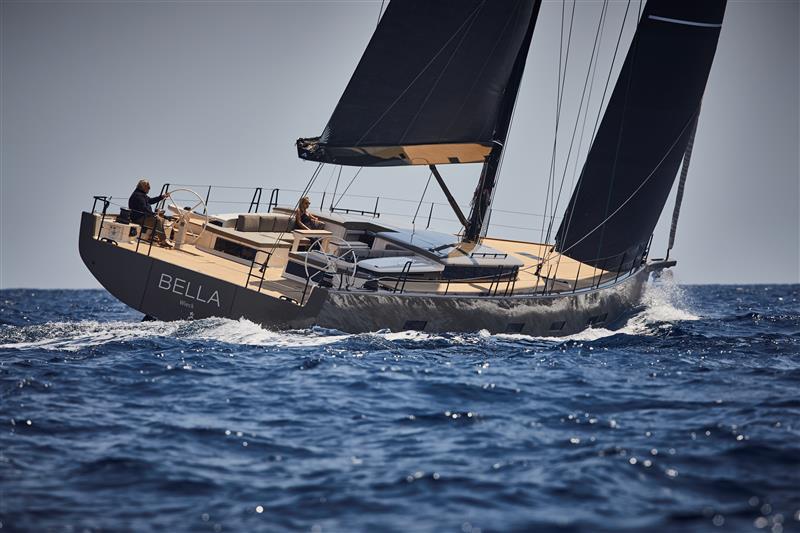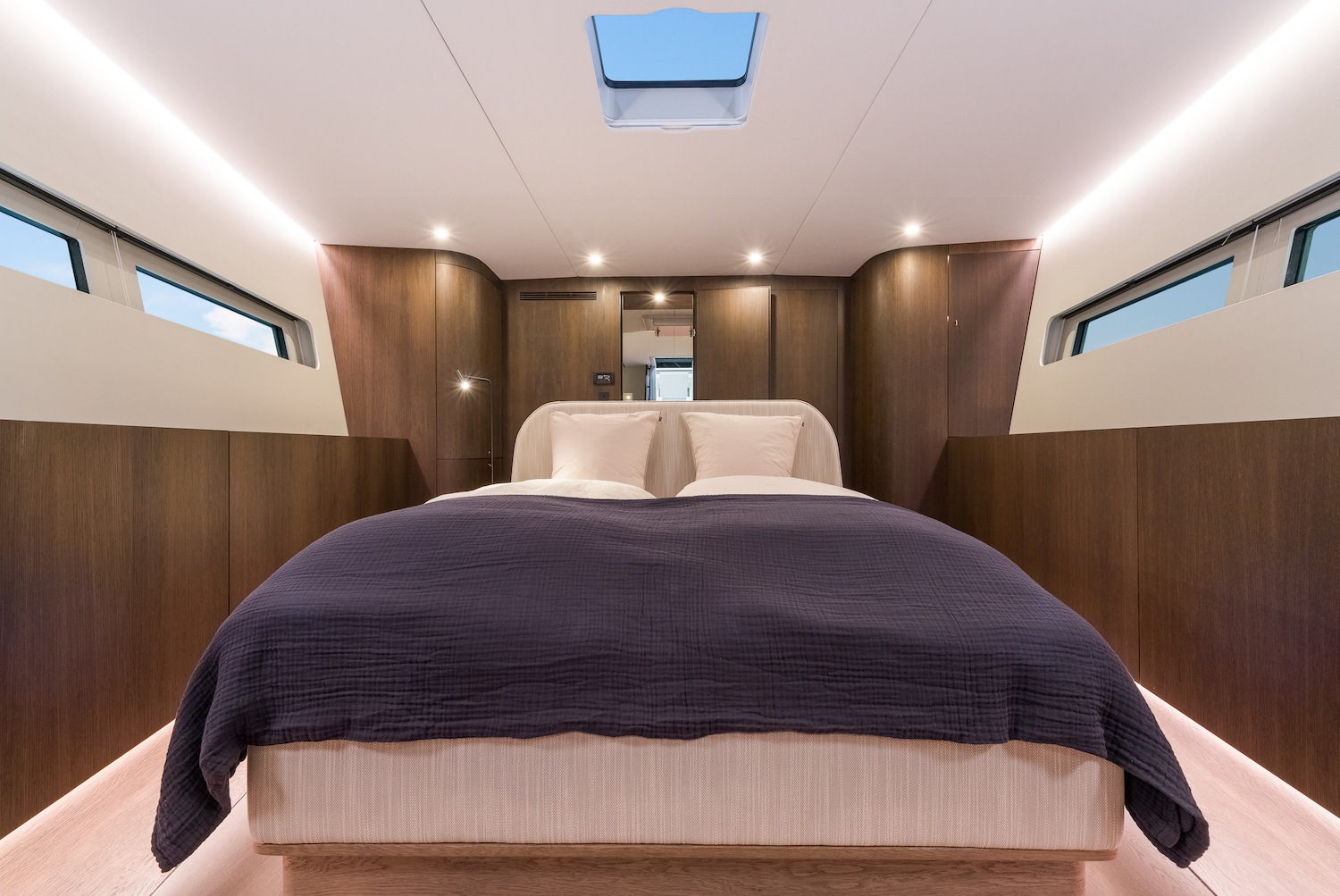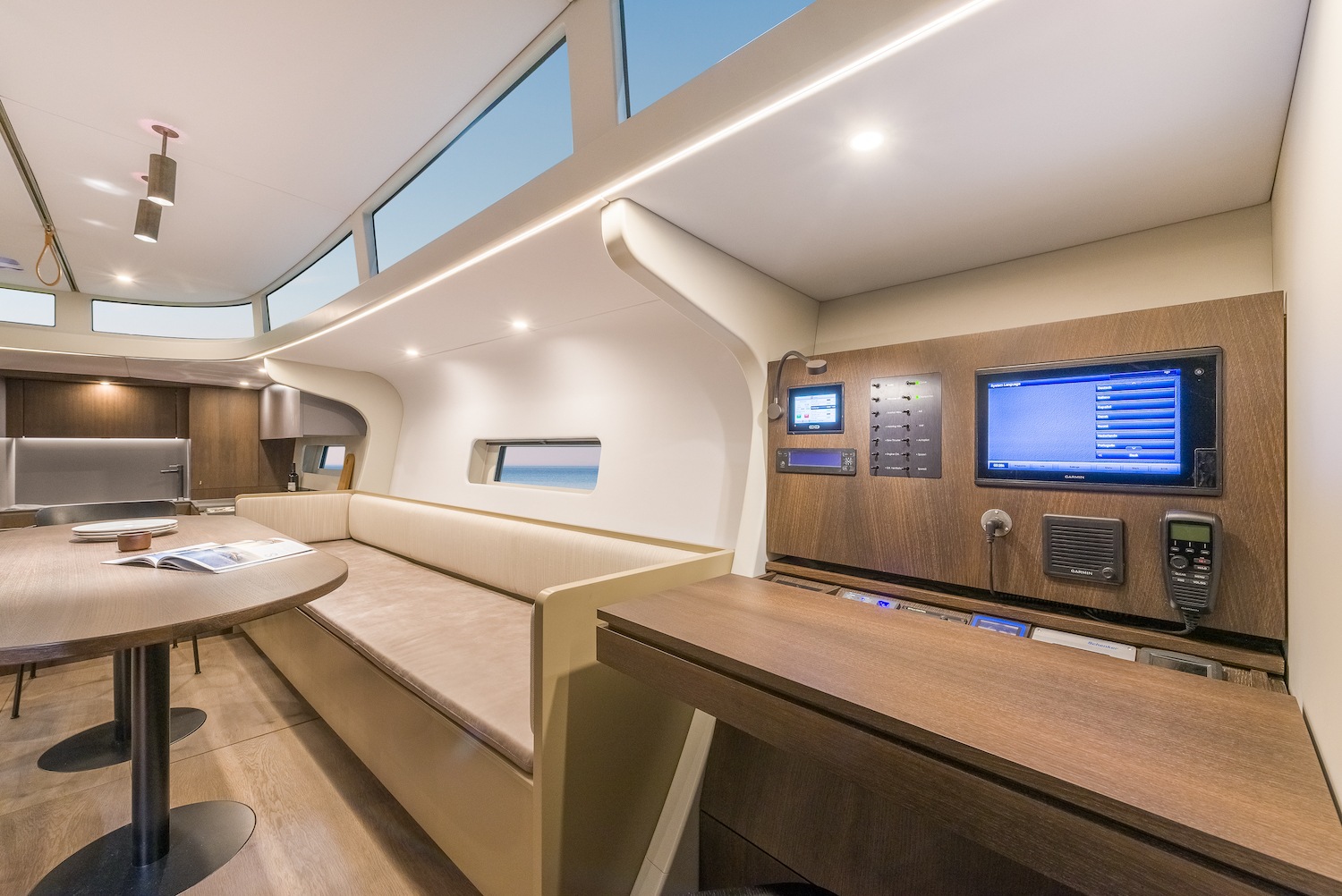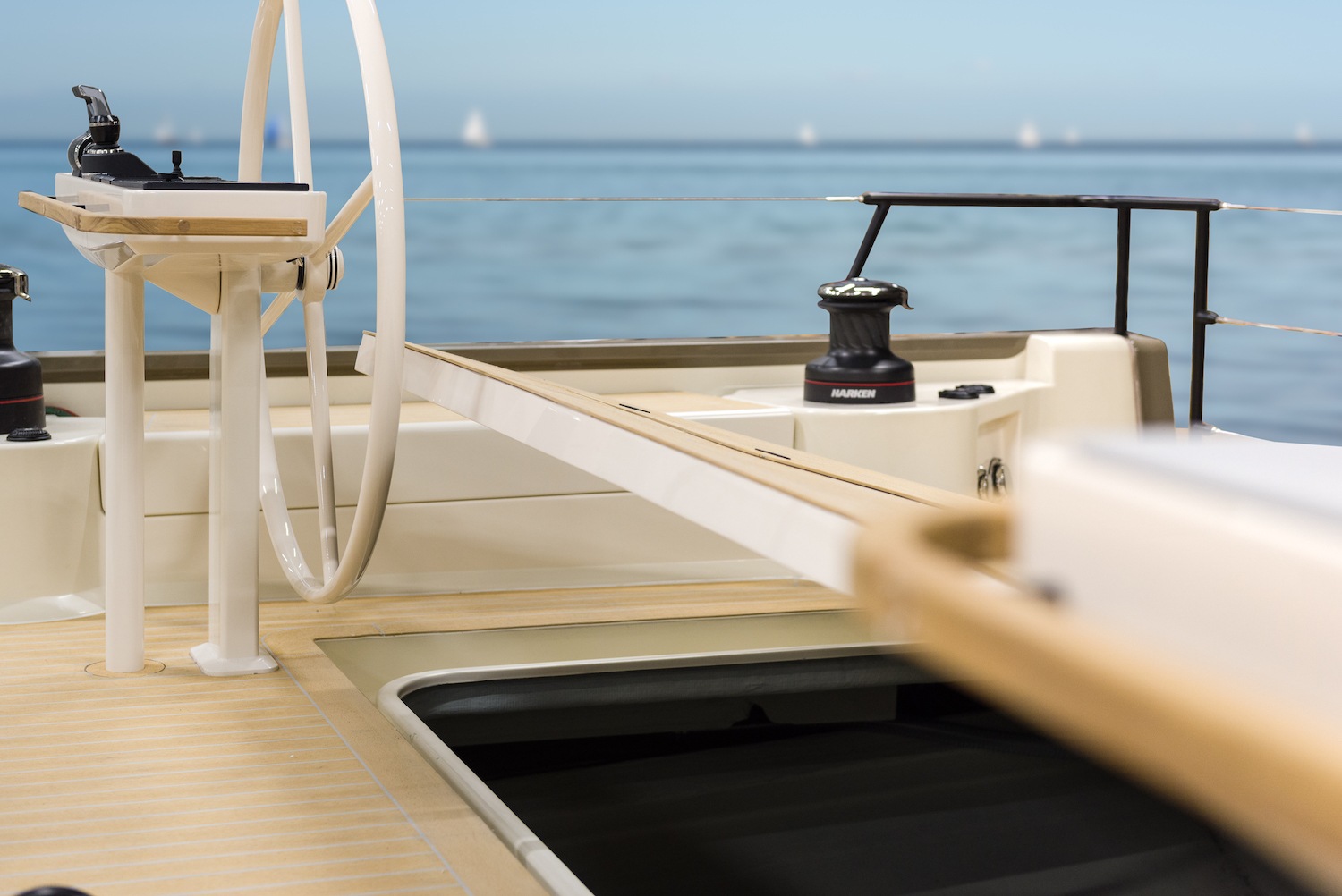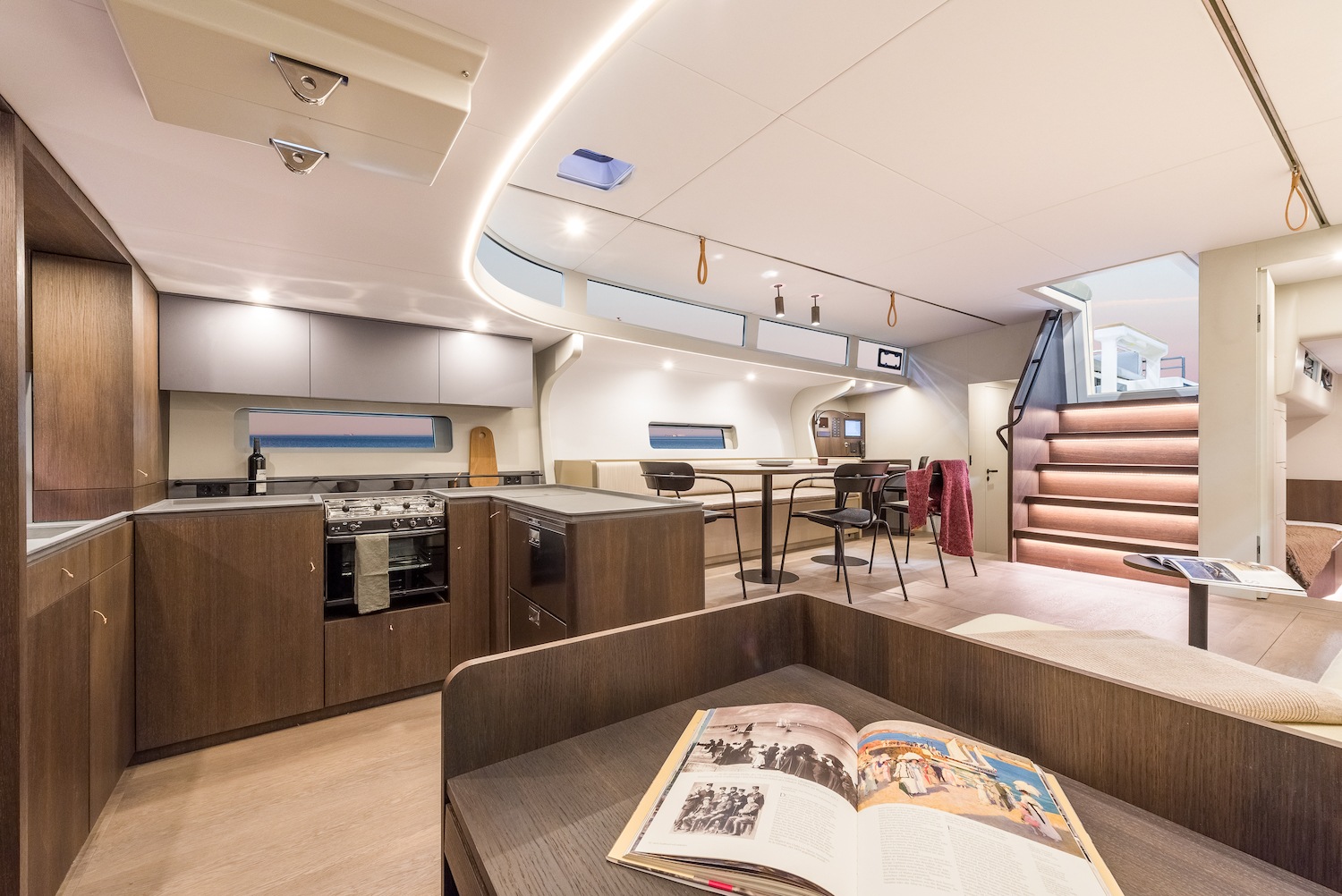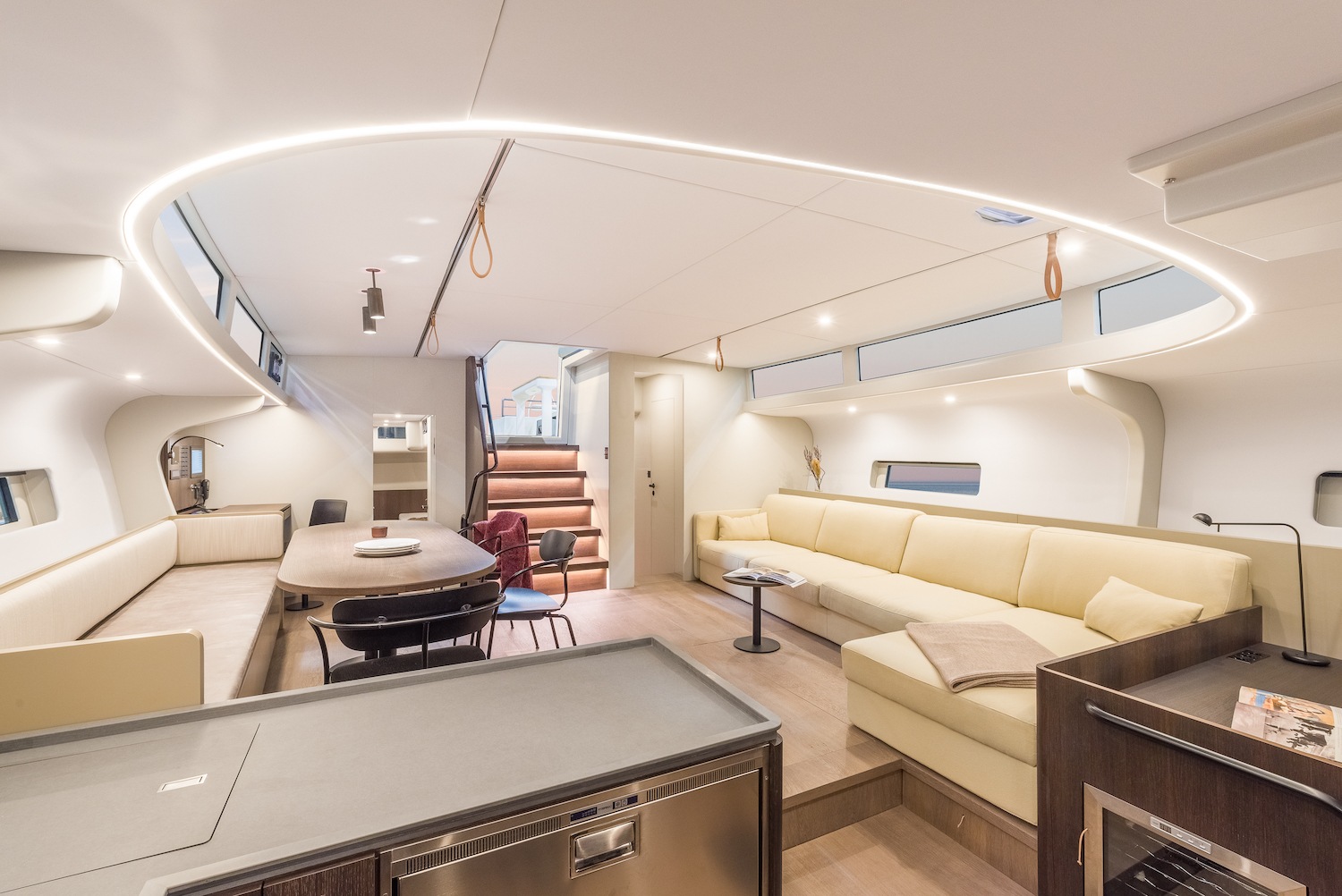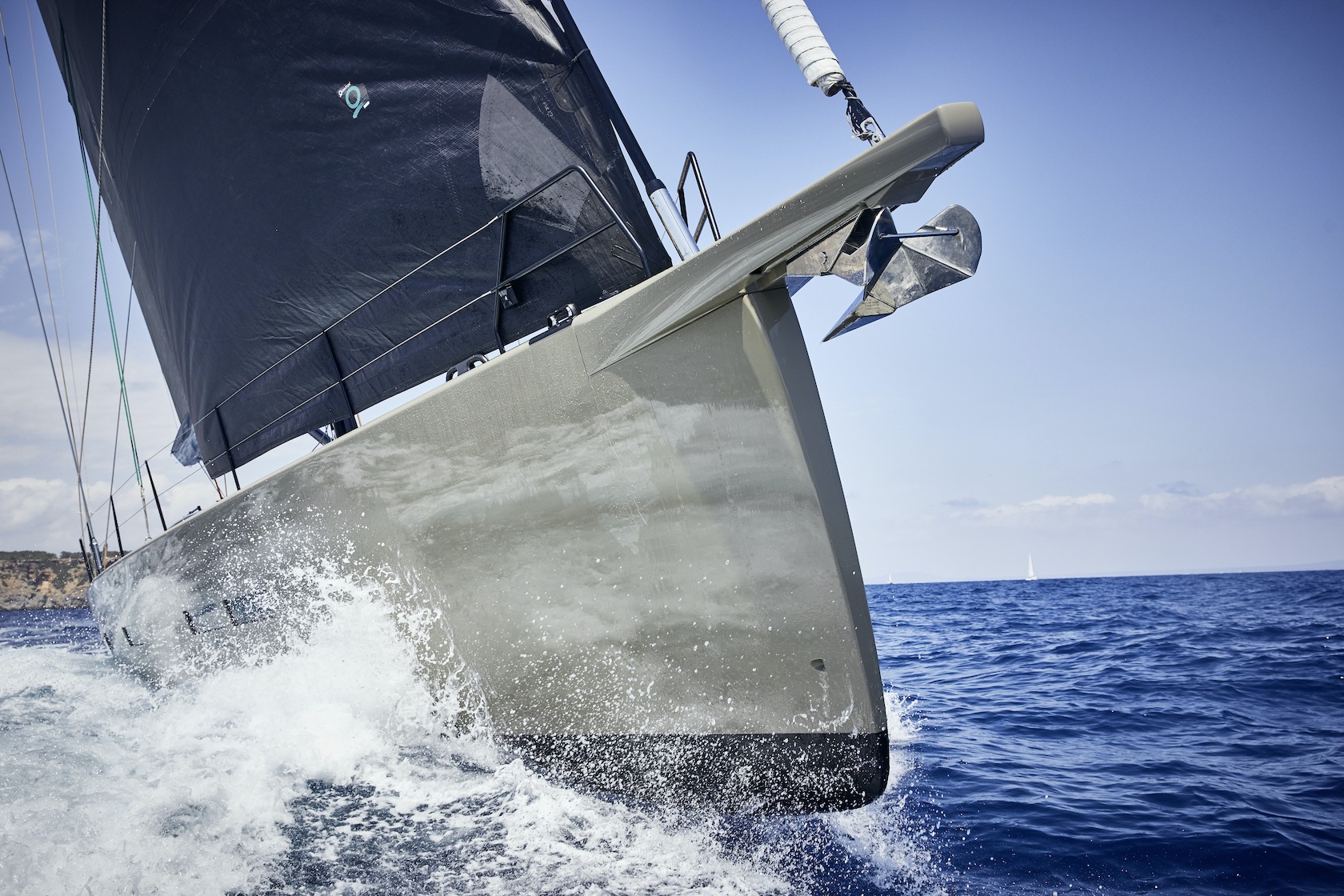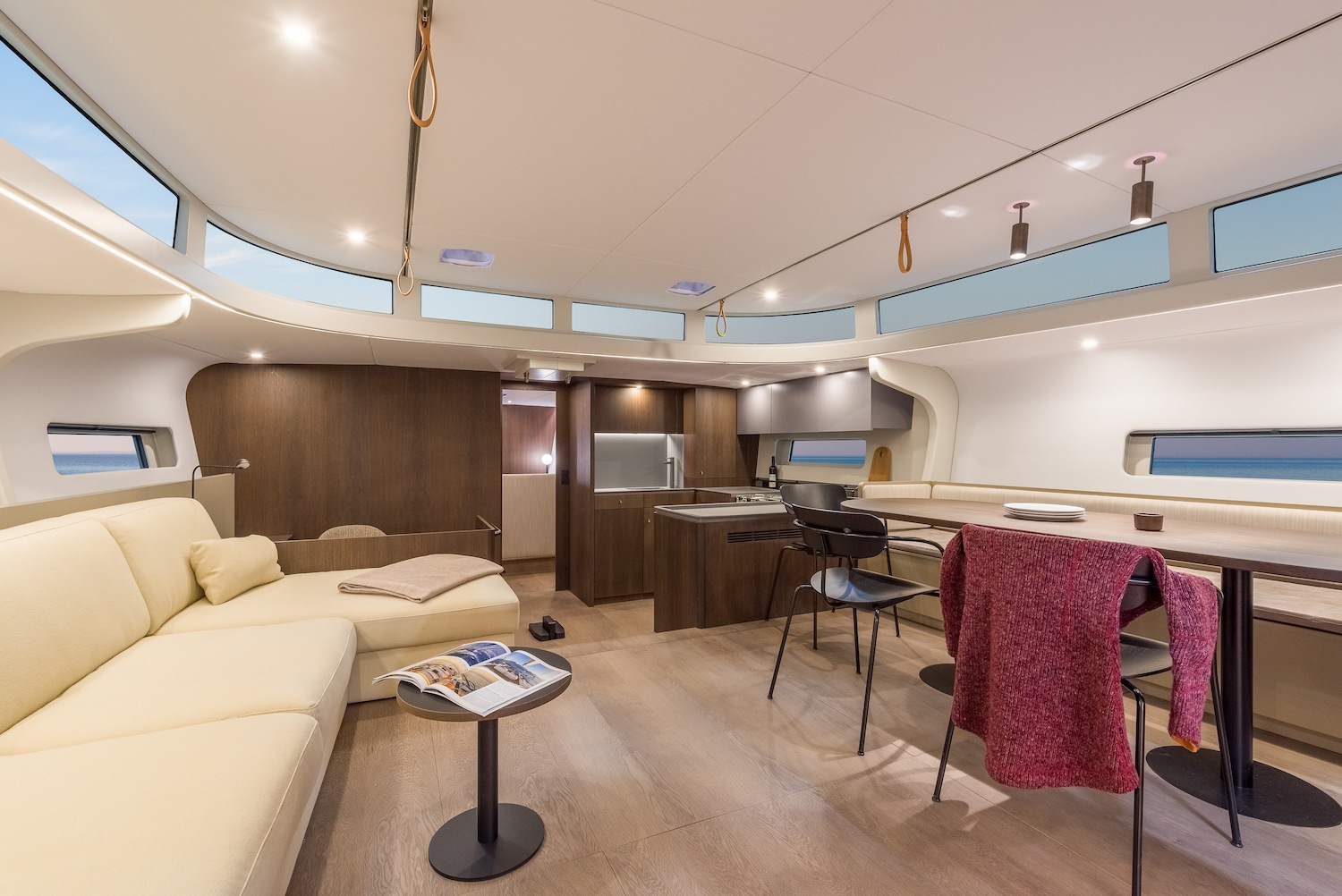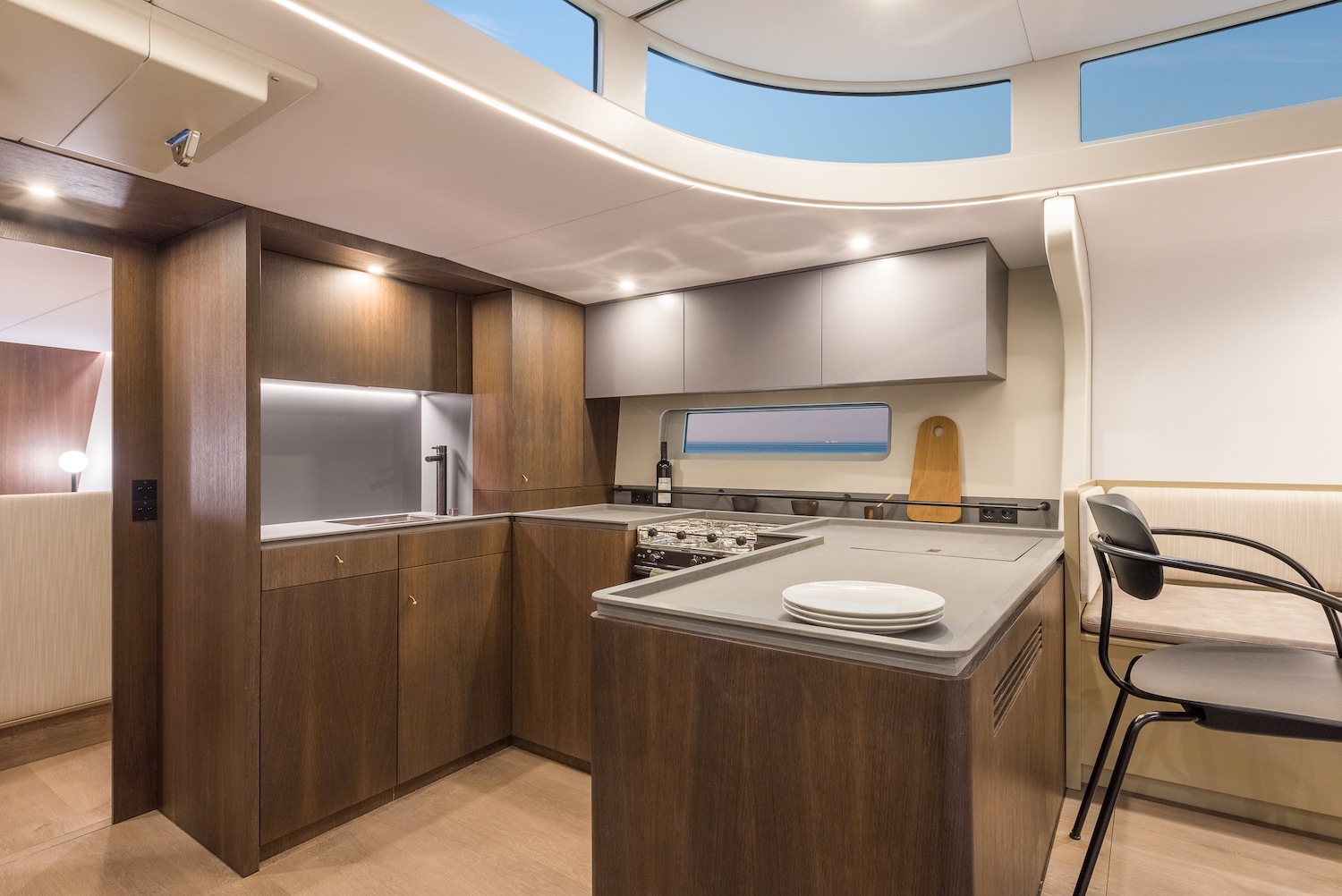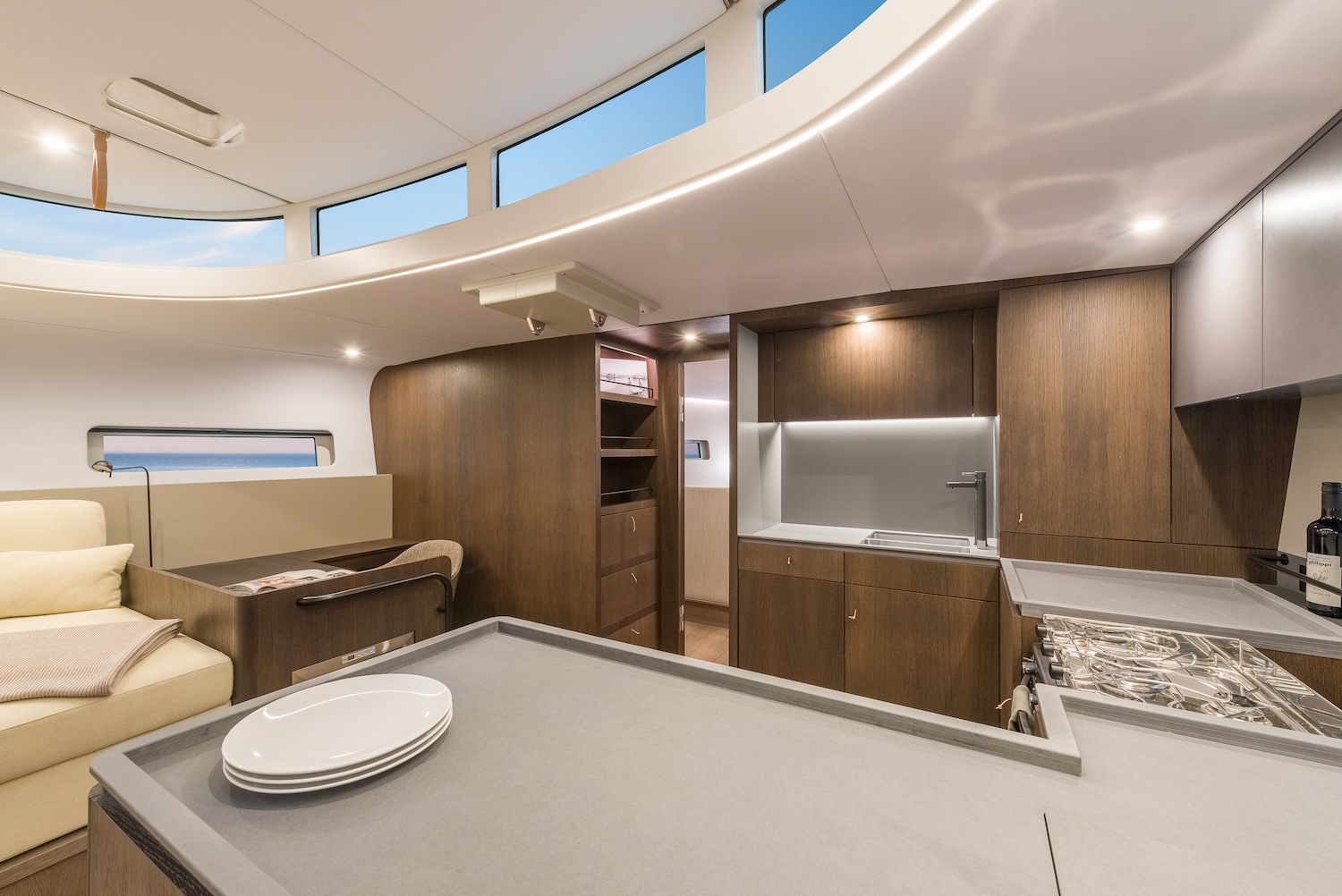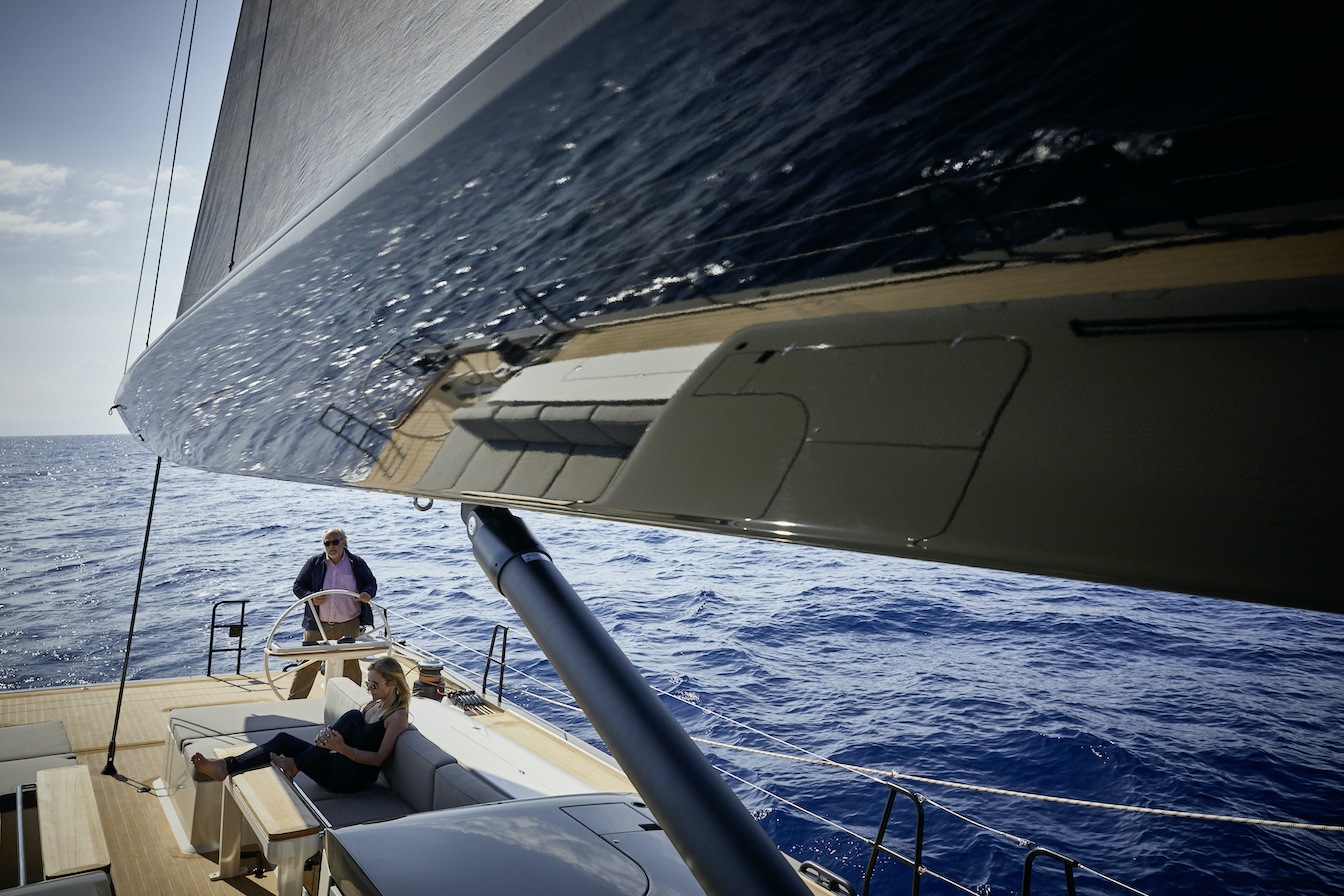The Y Factor
Simple but not Spartan; fast but roomy; technical but easy to sail - the new Y7 from Michael Schmidt Yachtbau is full of intriguing contradictions.
15 April 2020
Advertisement
Sailors, by nature, are minimalists.
They understand all too well, on a yacht the more complicated a system, the more moving parts it has, the greater the chances it will crap out at the least opportune moment. The problem with efficient simplicity is it can be decidedly uncomfortable. But not in the case of the Y7 from YYachts. This uber-stylish all carbon offering from high-end German yard YYachts is a blend of attractive aesthetics, innovation, comfort and performance.
The good aspects of minimalist design are literally ingrained throughout the Y7; from the furling system integrated into the flush decks with all lines covered and running aft to the huge cockpit and twin steering wheels, to the spacious semi-raised saloon and the Nordic influenced interior.
But the Y7 also benefits from an array of pleasing innovations and features like the aft cockpit deck that lifts up to reveal a very large tender garage, sliding leather grab handles in the saloon, and a foredeck mooring winch which seamlessly retracts out of harm’s way.
Advertisement
It’s not surprising the Y7 is so competent, after all its creator is Michael Schmidt, the founder of Hanse Yachts, and a pioneer of simple sailing solutions. In fact, the Y7 is a product of the enigmatic Schmidt’s extended cruising in the Med on the biggest Hanse he could get at the time, the 630e.
As a result of that experience the Y7 is light at 28.5 tonnes for its size of 21.33 metres. With a sail area of almost 300-square-metres upwind the boat is powered-up in just 10 knots of breeze, registering 8 to 8.5 knots on the dial, fulfilling the brief to designer Bill Tripp of ensuring it would offer enjoyable sailing in single figure wind speeds.
Another key attribute of the Y7 was that it shouldn’t need to motor in the light airs of an atypical Med summer. Its sail displacement ratio is a considerable 33.4 which means the Y7 is going to have to be reefed early. But that also means there’s plenty of power aloft – evidenced by the boat’s reported respectable average speed of 14 knots across the Bay of Biscay on her delivery to the Med.
Having said that the big sloop is configured so it can be easily wrangled short-handed.
The genoa furler with its 350-square-metre Code Zero can be rolled-in in just 20 seconds, while a self-tacking jib and no backstay means an experienced couple or family can handle manoeuvres. Alternatively, a few professional crew is all that is needed to deliver the boat to a cruising ground or port.
The crew have their own private cabin aft with separate entry via the portside cockpit lounge seat. There is plenty of natural light, two berths with drawers underneath and more storage space in overhead lockers. The cabin with its own bathroom, also offers an alternative entry point to the saloon in bad weather. This arrangement also enables the crew to access the deck with disturbing the owner or guests.
The Y7’s cockpit is an expansive entertaining or relaxation area, accommodating eight around two lounges and twin fold-out teak tables. They can enjoy all the ambience of feeling the big sloop slide across the waves, without having to worry about any of the mechanics.
The space is essentially divided into two areas: forward of the traveller is the guest space, aft is the sailing part. The mainsheet is on a recessed track to a single point then led forward to the mast and aft to one of two winches located within arm’s reach forward either side of the wheels. The other two are just behind the helmsman.
This set-up, together with all sheets and halyards leading aft, results in a mass of rope tails in the cockpit. Fortunately, there are decent rope lockers between the winches to keep the lines from becoming a bear trap.
That sense of efficiency also translates into the push of a button on the helm console that lifts the entire deck aft of the wheels on struts. The mechanism is electric not hydraulic – another welcome simplifying feature. The cavernous space underneath houses the 3.45 metre Williams Jet Tender, with room as well for kayaks and the odd Laser. The boom is used to crane the tender out over the side.
The Y7’s semi-raised saloon with its large rectangular windows accentuate the vaulting interior. Norm Architects from Copenhagen, a newcomer to yachting devised the interior for the first Y7, Bella.
The Danish architects who usually work in furniture and house design, created a pared-back design with neutral tones, high-quality veneers and stone finishes. The Nordic feel is characterised by subtle restraint and maximum closeness to nature.
Descending the wide companionway stairs with recessed lighting, a nav table and comms hub featuring a C-Zone touch screen system is immediately to starboard. The furniture, including a beautifully crafted saloon table, is attached though appears free-standing. Two spacious bench lounges set in a wide-open space extend as far as the galley, sited amidships. To help you traverse it, there are handy sliding leather grab handles on tracks in the ceiling. There’s a choice of a central transverse galley or passageway galley aft, both are well-served by fridge-freeze drawers and a gimballed stovetop/oven.
The owner’s stateroom in the bow and two cabins aft of the saloon accommodate a total of six guests plus a crew cabin. A walk-around island berth in the owner’s suite while exceedingly comfortable at an anchorage might not be that practical underway at sea, and hull number two has an offset berth. Retractable leather chords open cupboards and drawers that are very light yet functional. The weight savings extend to full carbon heads and vanities. The yacht’s large beam is emphasised as a virtue by exposing the curves and structures of hull sides.
The layout, though, can of course be adapted. The Y7 is built in eleven segments, which are variable in size and cut. Construction is carbon sandwich with an epoxy outer skin.
Although Schmidt built some of the earliest carbon race yachts, he now subcontracts hull and deck moulding to specialist lamination yards in Poland and Slovenia, then fitting out in his new 3,000-square-metres facility in Greifswald.
A lot of thought has gone into maximising the Y7’s performance. The locating of twin 80 hp Nanni engines ensures a low centre of gravity. Their relatively small size means the saloon sole and the coach house can be kept low and streamlined.
While the boat boasts superyacht amenities it is still approachable, is fast and responsive and comparatively easy to manage.
“An owner,” says Michael Schmidt, “should be able to operate their yacht intuitively. It should not be too complex and comfortable at the same time. The Y7 achieves all this and more.”
How a Y7 might handle the more ‘robust’ conditions often experienced in the seas and oceans that batter the Australian and New Zealand coasts is an unknown, but its design and construction are heavily influenced and informed by Schmidt’s tenure at Hanse. And Hanse like to reference the fact that they are among the top selling yachts in both the Australian and NZ markets.
In a yachting sense, the best application of the ‘less is more’ philosophy advocated by the father of minimalism German architect Ludwig Mies van der Rohe, is probably about utilising the best technology to find ways of making sailing simpler more efficient.
The Y7 achieves that and fuses it with a distinctive style that can be appreciated by any dockside dilettante. However, I suspect the owners of a Y7 would have a professional crew and enjoy the diverse range of unique cruising opportunities it affords.
Advertisement
Advertisement
Advertisement
Standing in solidarity


